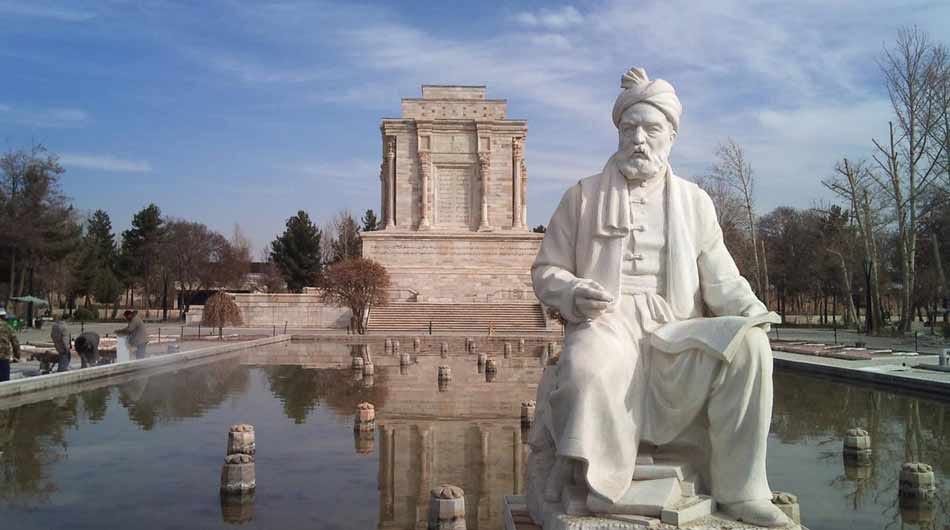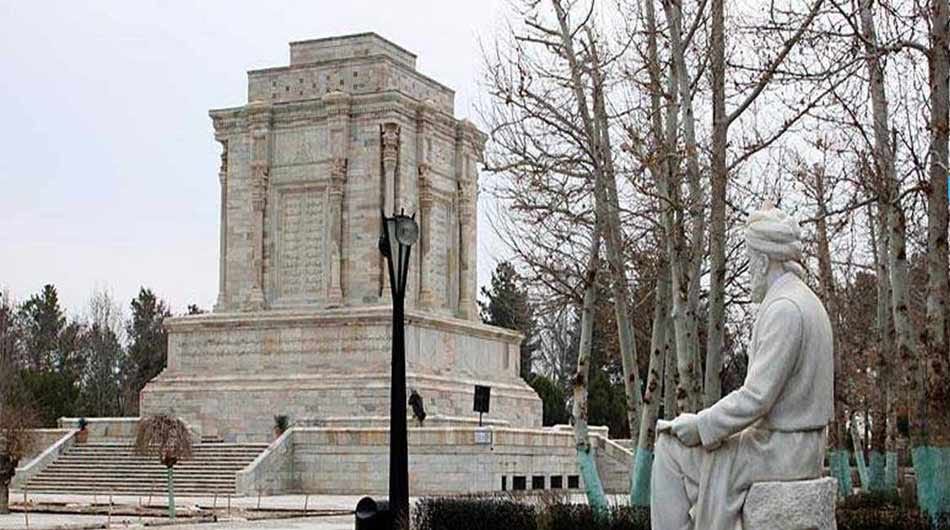The Eternal Legacy of Ferdowsi: The Mausoleum That Honours Persia’s Epic Poet
Exploring the poetic grandeur, architectural symbolism, and serene surroundings of Ferdowsi’s tomb near Mashhad
Introduction
In the heart of Tus (Tus, near Mashhad in Iran’s Razavi Khorasan Province) lies the distinguished tomb of Abolqasem Ferdowsi — an emblematic figure in Persian literature. Revered as the author of the monumental Shahnameh (Book of Kings), Ferdowsi’s mausoleum stands as a moving homage to Iran’s rich pre-Islamic heritage and the enduring power of the Persian language.
A Poet’s Monument: Architecture and Symbolism
Constructed in the early 20th century, the mausoleum draws strong architectural inspiration from the tomb of Cyrus the Great, evoking Achaemenid design elements and connecting Ferdowsi’s legacy to Iran’s ancient imperial heritage.
Its rectangular, marble-clad structure is surrounded by a traditional Persian Chaharbagh (four-part garden), forming a peaceful and picturesque setting. Inside, the walls are adorned with sculptures and inscriptions from the Shahnameh, brought to life in elegant Nastaʿliq script. Architectural echoes continue in the cube-like tomb, crowned by a roof of white marble — a tribute to Ferdowsi’s revered status. Added features such as stairways on each of the four sides, and a symbolic Ahuramadza emblem above the southern stone, further reinforce the fusion of artistry and spirituality.
Artistic Treasures & Themed Museum
The surrounding complex includes a museum designed by architect Houshang Seyhoun. Inside, visitors will discover relics such as ancient coins, pottery, and horse-riding equipment, enriching the cultural narrative of the region. Manuscripts of the Shahnameh, paintings inspired by its stories, and carpets featuring its themes further enhance the immersive experience.
Visit Planning: Practical Insights
When to Visit
For a more pleasant experience, plan your trip during spring (March–May) or early autumn (September–November), when the weather is mild and the gardens are in full bloom.
Visitor Experience
The site welcomes visitors daily, generally from 08:00 to 18:00. Mornings are particularly peaceful, offering a contemplative atmosphere ideal for appreciating the site undisturbed.
Visitor Facilities
On-site amenities ensure a comfortable visit:
Guided tours are available in Farsi and English, providing rich context on Ferdowsi’s life and the symbolism woven into the mausoleum’s architecture.
Cafes, gift shops, and restrooms are conveniently located within the complex. Visitors can enjoy refreshments, browse Persian crafts, postcards, and souvenir books as mementos of their journey.
Beyond the Mausoleum: Nearby Highlights
Expand your visit with these nearby historical and spiritual landmarks:
Haruniyeh Dome: A Seljuk-era structure that reflects early Muslim-era architecture nestled within Tus.
Nader Shah’s Mausoleum: Located in Mashhad, this grand tomb honours one of Iran’s most powerful leaders from the Afsharid dynasty.
Imam Ridha Shrine: Also in Mashhad, this is one of Shia Islam’s holiest sites, renowned for its stunning Islamic architecture and golden dome — a site of deep spiritual significance.
Local restaurants and bazaars offer an authentic taste of regional life — from saffron-infused dishes and kebabs to traditional ice creams and handicrafts. For modern comforts, Mashhad also features contemporary malls alongside traditional shopping venues.
Final Thoughts
Visiting Ferdowsi’s tomb is more than a sightseeing experience — it is a journey into the soul of Persian literary heritage. From its evocative architecture and serene gardens to its curated exhibitions and historic neighbours, the site invites reflection on the enduring cultural identity Ferdowsi helped preserve. Whether you seek literary inspiration, architectural wonder, or spiritual connection, this sacred mausoleum offers all this and more — a true tribute to Iran’s poetic grandeur and cultural resilience.
ShiaJourneys: Your Companion on the Path
At ShiaJourneys, we believe travel should be more than movement from place to place — it should be an immersion into history, culture, and faith. Our team can help you plan a journey that combines visits to sites like Ferdowsi’s mausoleum with nearby spiritual landmarks such as the shrine of Imam Ridha (AS) in Mashhad. Whether you are drawn by literature, architecture, or spirituality, ShiaJourneys can guide you in creating an experience that nourishes both the mind and soul.




